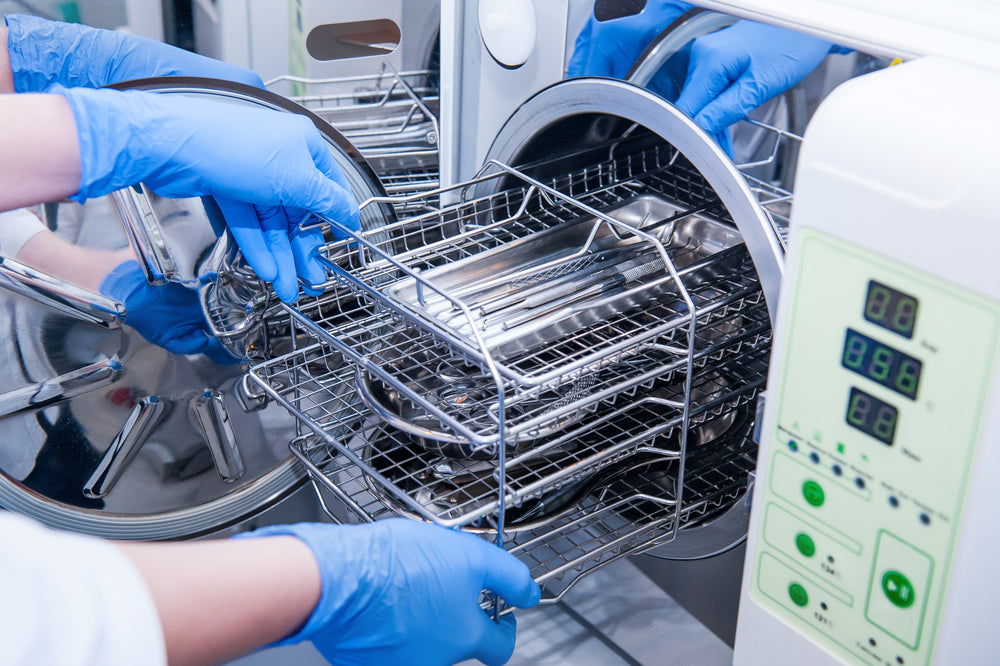
Autoclaves are a highly reliable sterilisation device that can sterilise all types of instruments of various sizes and shapes.
Autoclaves are capable of killing microorganisms, especially those that are heat-resistant such as endospores, and is most often used in pharmaceutical and medical settings such as healthcare facilities since instruments used in these fields can often be exposed to viruses and bacteria.
Different autoclaves come in different shapes, sizes, and even functionalities; however, the main governing characteristic of all autoclaves is the utilisation of steam to effectively sterilise instruments.
Steam sterilisation is generally built upon three parameters: time, temperature, and pressure.
In this article, we’ll be talking all about these principles and how they function in an autoclave.
How Does An Autoclave Work?
Before we explain what the principles of steam sterilisation are, it is important that we contextualise these principles and explain how an autoclave works.
An autoclave is a high-pressure chamber that uses steam under pressure to kill bacteria, fungi, viruses, and spores on instruments. So, why does an autoclave use steam sterilisation?

First, let’s talk about these microorganisms. There are many microorganisms that are known to be heat-resistant and are therefore hard to kill.
As such, it is important to use as much heat and energy in order to kill them.
Killing cells through heat can only be achieved by raising the temperature to a point in which the proteins in the cell begin to break down and coagulate.
This is why steam is known to be an effective method of sterilisation: it is an excellent medium for transferring heat, which makes it an excellent method to kill microorganisms.
Aside from this, steam sterilisation is known to be non-toxic, inexpensive, and effective in killing microbes and spores as it can rapidly heat and penetrate surfaces.
Autoclaves generally carry out their processes in three phases:
1). Purge Phase
- This is the beginning phase in which air within the chamber is expelled and replaced with steam that flows throughout the chamber. The temperature and pressure also begin to increase as steam continues to flow.
2). Exposure or Sterilisation Phase
- A control system closes the exhaust vault of the autoclave so that the temperature and pressure within the chamber begin to rapidly increase. The control system will maintain a set temperature one the desired time is reached.
3). Exhaust Phase
- In this phase, pressure from the chamber is released through the exhaust valve. The interior of the chamber is restored to ambient pressure.
Autoclave: The Basic Principle Of Steam Sterilisation
Autoclaves make use of saturated steam under pressure which is recognised as a highly dependable form of sterilisation because moist heat is capable of denaturating enzymes and structural proteins.
As we mentioned previously, this is essential to killing microorganisms as they can only be killed if their protein breaks down and start to coagulate.
The basic principle of steam sterilisation functions by exposing an item or an instrument to direct steam at a set temperature and pressure level for a specific period of time.

As we saw in how an autoclave works, steam sterilisation is based on temperature, pressure, and time.
Specific temperatures must be met in order to efficiently kill microbes that are typically resistant to heat.
This is why the usual temperature is set above the boiling point of water. As pressure is a means by which high temperatures can be obtained, it is also important that pressure levels remain high so that we can achieve the required temperature of steam.
Moreover, time periods are important for sterilisation as this helps maintain a constant level to monitor and control the sterilisation process.
So, in short, it is not the pressure that kills the microorganisms, but the high temperatures which can be obtained by placing steam under pressure.
Steam is a great agent to denature proteins, which is the only way that harmful cells can be killed.
Generally, the recommendation for sterilisation in an autoclave is around 15 minutes at 121°C.
Summary
MES Medical Equipment Services has been Australia’s leading provider of autoclaves and other medical equipment and equipment services since 1952.
We were originally established to provide electro-medical products to healthcare professionals across the country.
Our products range from sterilisation, dental systems, dental imaging, electrosurgical equipment, medical consumables, dental lasers, and equipment service maintenance.
We sell only top of the line equipment and machines produced by the leading manufacturers in the world. Our integrity and standards are your guarantees!
If you are searching for the best autoclave supplier in Australia, then look no further than Medical Equipment Services Australia.
For all your medical and dental supply requirements, please call us today on 1300 342 013 or contact us through our website.


